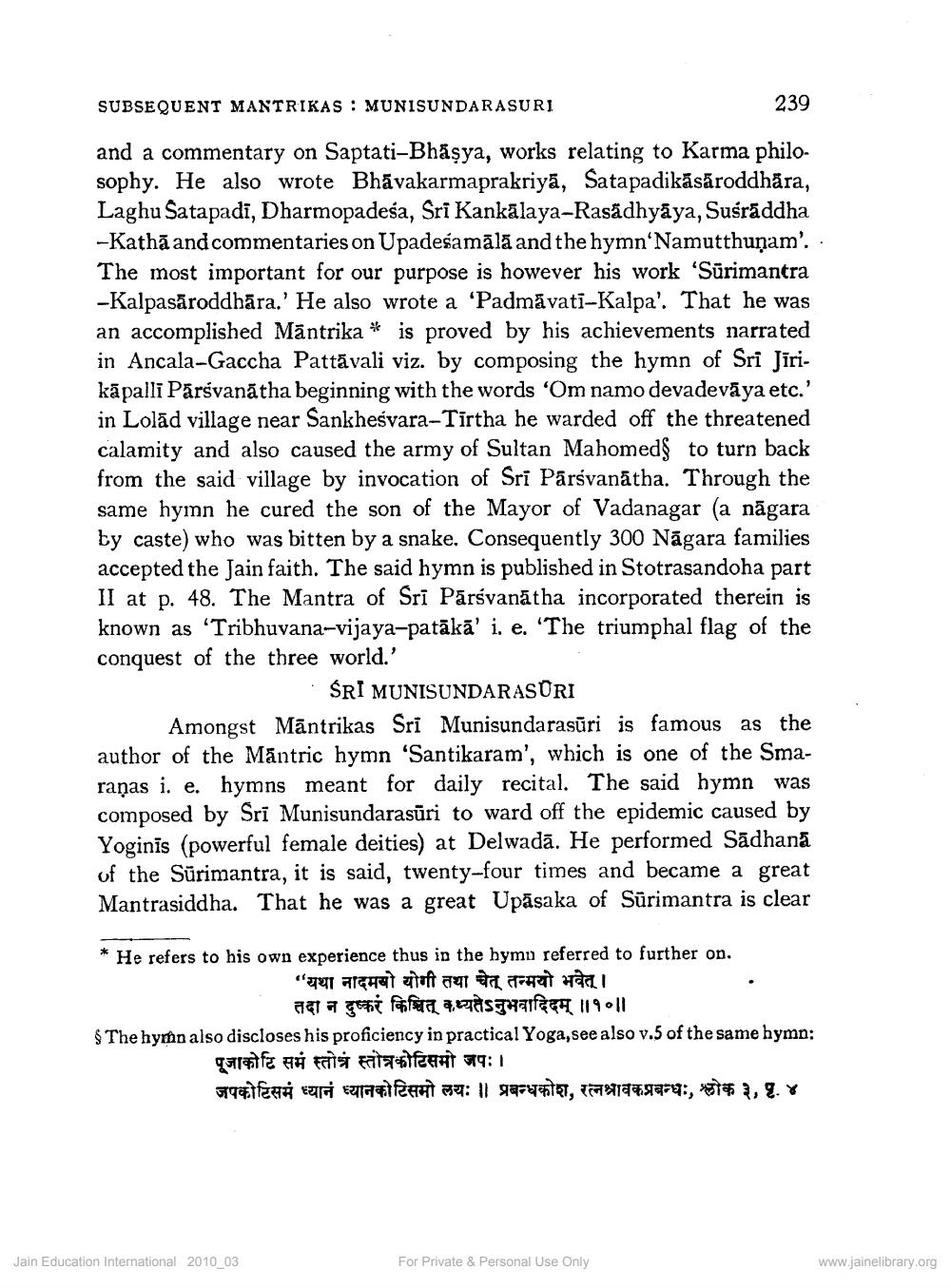________________
SUBSEQUENT MANTRIKAS: MUNISUNDARASURI
239
and a commentary on Saptati-Bhäşya, works relating to Karma philosophy. He also wrote Bhāvakarmaprakriya, Satapadikāsāroddhara, Laghu Satapadi, Dharmopadeśa, Sri Kankālaya-Rasádhyāya, Susrāddha -Kathā and commentaries on Upadeśamālā and the hymn Namutthuņam'. . The most important for our purpose is however his work 'Sūrimantra -Kalpasāroddhāra.' He also wrote a 'Padmavati-Kalpa'. That he an accomplished Māntrika * is proved by his achievements narrated in Ancala-Gaccha Pattávali viz. by composing the hymn of Sri Jīrikāpalli Pārsvanātha beginning with the words 'Om namo devadevāya etc.' in Lolād village near Sankheśvara-Tirtha he warded off the threatened calamity and also caused the army of Sultan Mahomed to turn back from the said village by invocation of Sri Pārsvanātha. Through the same hymn he cured the son of the Mayor of Vadanagar (a nāgara ty caste) who was bitten by a snake. Consequently 300 Nāgara families accepted the Jain faith. The said hymn is published in Stotrasandoha part II at p. 48. The Mantra of Sri Pārsvanātha incorporated therein is known as 'Tribhuvana-vijaya-patākā' i. e. 'The triumphal flag of the conquest of the three world.'
SRI MUNISUNDARASORI Amongst Māntrikas Sri Munisundarasūri is famous as the author of the Mantric hymn 'Santikaram', which is one of the Smaraņas i. e. hymns meant for daily recital. The said hymn was composed by Sri Munisundarasūri to ward off the epidemic caused by Yoginis (powerful female deities) at Delwadā. He performed Sadhana of the Sūrimantra, it is said, twenty-four times and became a great Mantrasiddha. That he was a great Upāsaka of Sūrimantra is clear
* He refers to his own experience thus in the hymu referred to further on.
__ "यथा नादमयो योगी तथा चेत् तन्मयो भवेत् ।
तदा न दुष्करं किश्चित् कथ्यतेऽनुभवादिदम् ॥१०॥ $ The hymn also discloses his proficiency in practical Yoga, see also v.5 of the same hymn:
पूजाकोटि समं स्तोत्रं स्तोत्रकोटिसमो जपः। जपकोटिसमं ध्यानं ध्यानकोटिसमो लयः ॥ प्रबन्धकोश, रत्नश्रावकप्रबन्धः, श्लोक ३, पृ. ४
Jain Education International 2010_03
For Private & Personal Use Only
www.jainelibrary.org




